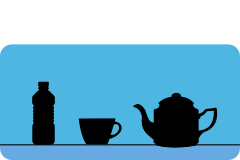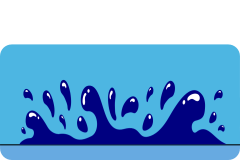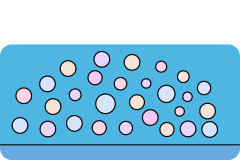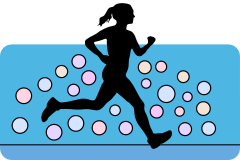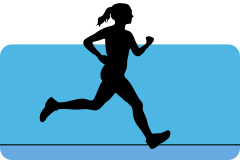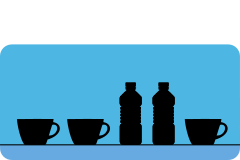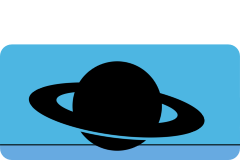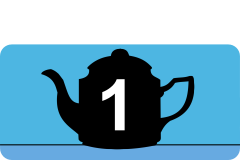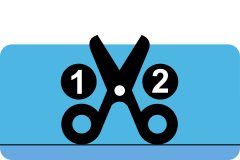How To Use These Materials
The following information is about all of the features that our flashcards have that allow them to be used for various teaching purposes. We included a variety of helpful teaching tools in the design of each card, because we believe that a lot of the built-in tools will because useful to most teachers sooner or later.
However, there is no need to learn about all of these features right away. A teacher could simply use these flashcards for their primary purpose -- teaching vocabulary words.
You may wish to quickly browse through the following list of built-in tools, though. These cards may contain a solution that you need for your next lesson.
Explain Countable Versus Uncountable Nouns
The difference between countable and and uncountable nouns may be difficult for some young learners (or even adult learners) to understand, especially if their native language is a language like Chinese that does not have a grammatical distinction between countable and uncountable nouns.
A quick explanation:
- Countable nouns, like bottle, cup, or pot, can be counted. We can say, "I have 3 bottles."
- Uncountable nouns, like bread or oil, cannot be counted with number. We cannot say, "I have 3 oils."
- Uncountable nouns must be measured by some unit of measurement. This can be a formalized measurement, such as 'kilograms,' but measure words, like 'basket' or 'container' can also be used. For example, we can say, "I have 2 baskets of bread" or "I have 3 containers of oil."
Our countable and uncountable noun vocabulary flashcards each have their own symbols that emphasize this difference.
|
Singular Noun Symbol A teacher can point to the three examples -- a bottle, a cup, and a pot -- and emphasize that there is only one of each. |
Uncountable Noun Symbol Teachers can ask students "how many waters can you count?" to communicate that some nouns cannot be counted in individual units. |
Teachers can use the following simply activity to explain the difference between countable and uncountable nouns to young learners, even if the students only know a handful of English words.
- Pour some water on a table, desk, or other surface.
- Ask your students, "How many waters?"
- Engage in some slapstick comedy as you pretend to try to "count the waters." It should now be clear to your students that the quantity of water cannot be counted in this way.
- Pour some water into three or four cups. Then ask your students, "How many cups of water?" Then count the cups. It should now be clear to your students that cups are countable, but water (all by itself) is not.
- As you continue to teach new nouns in future lessons, you can now use the countable and uncountable symbols on noun cards to remind your students of this activity and what they learned.
Teach Correct Article Use
The English grammar related to using article isn't especially intuitive for young learners. To make it easier, we've integrated a system into our flashcards that makes it simple to show what words can and cannot preceed nouns. This system also uses some of our Sight Word Flashcards.
Note: This feature requires that the flashcard be cut out along their outer black outline edges.
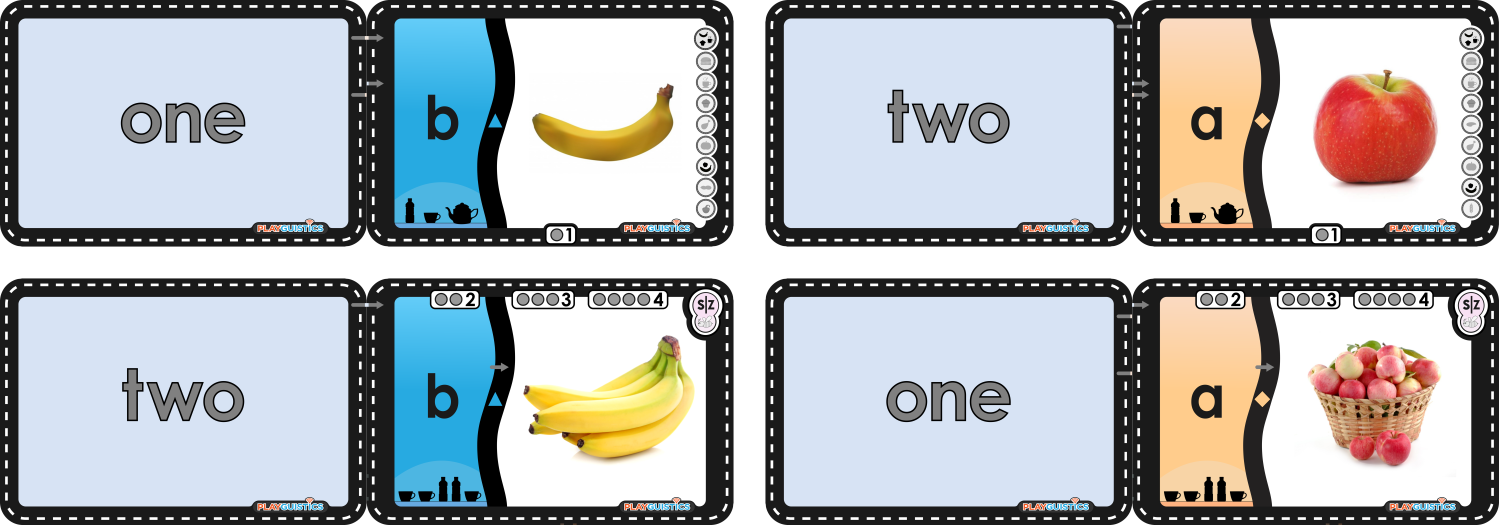
With the cards above, you can see that when the word 'one' is placed in front of 'banana,' and the word 'two' is placed in front of 'bananas,' the gray lines on each card connect.
But when the word 'two' is placed in front of 'apple,' and the word 'one' is placed in front of 'apples,' the gray lines on each card don't connect.
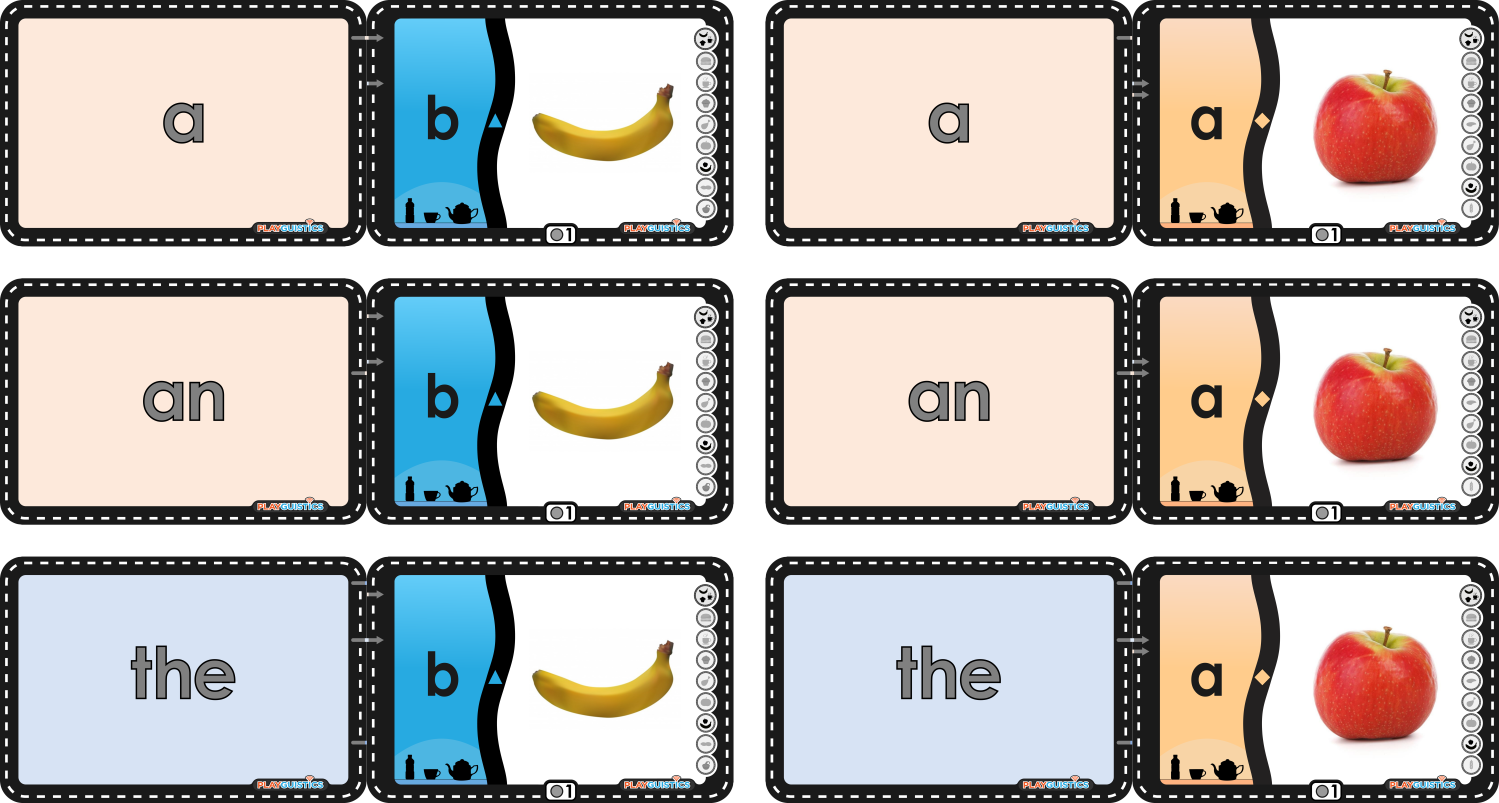
With the cards above, the gray lines show that 'a' can go before 'banana,' but 'an' cannot go before 'banana.' Similarly, 'a' cannot go before 'apple,' but 'an' can go before 'apple.'
'The' can go before both 'apple' and 'banana.'
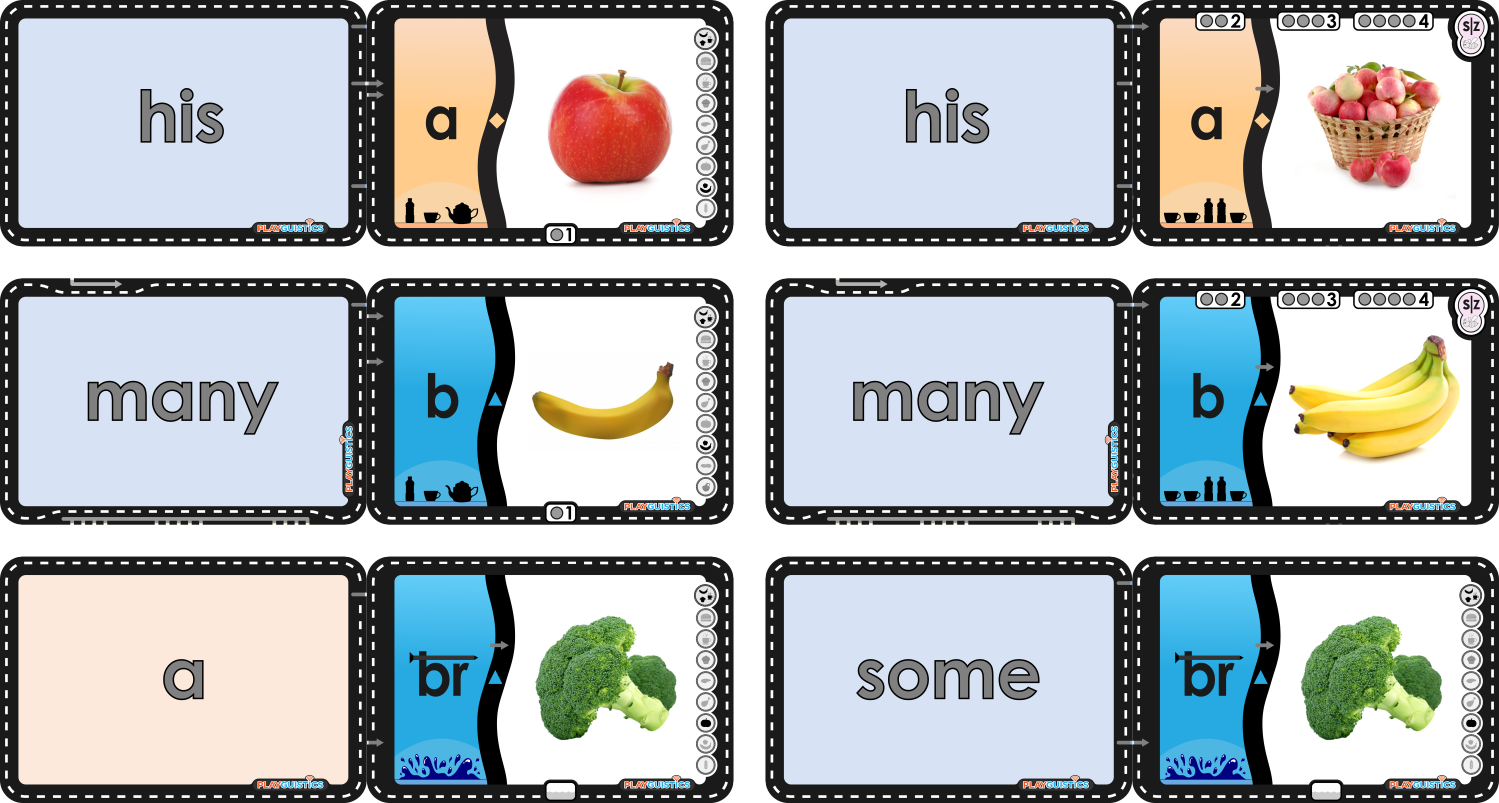
The examples above show some of the other grammar rules that teachers can use these cards for. However, the possibilities are not limited to what is shown on this page. There are a lot of other grammar points that users will discover can be taught with these cards.
Differentiate Adjectives, Adverbs, and Verbs
The helpful part-of-speech icons on each card will help teachers educate their students on the role that each word can play in producing and clarifying meaning.
|
Adjective Symbol Includes a group of different colors as a visual reminder to students that colors are a common example of adjectives. |
Adverb Symbol Combines the symbols for 'adjectives' and 'verb' to help communicate to learner that 'adverbs' are 'adjectives for 'verbs.' |
Verb Symbol The runner offers a helpful example of a motion-oriented verb. This makes it easy for teachers to explain that 'verbs' are action-words. |
Demonstrate Correct Adjective Order
English has some arbitrary but specific rules about the order the 2 or more adjectives must be worded. For example, a native speaker would never say, "a blue big house." Rather, they'd always say, "a big blue house."
Similarly, 'big' will always come before 'long' in a series of adjectives in a sentence, and 'cold' before 'snowy.'
These rules are incredibly difficult to explain to young second-language learners of English, but our flashcards make it much easier.
Along the tops and bottoms of our adjective cards are special connectors. If placed in a vertical stack in the order (from top to bottom) that the adjectives could appear in a sentence, the connectors will only connect if the order is correct.
Note: This feature requires that the flashcard be cut out along their outer black outline edges.
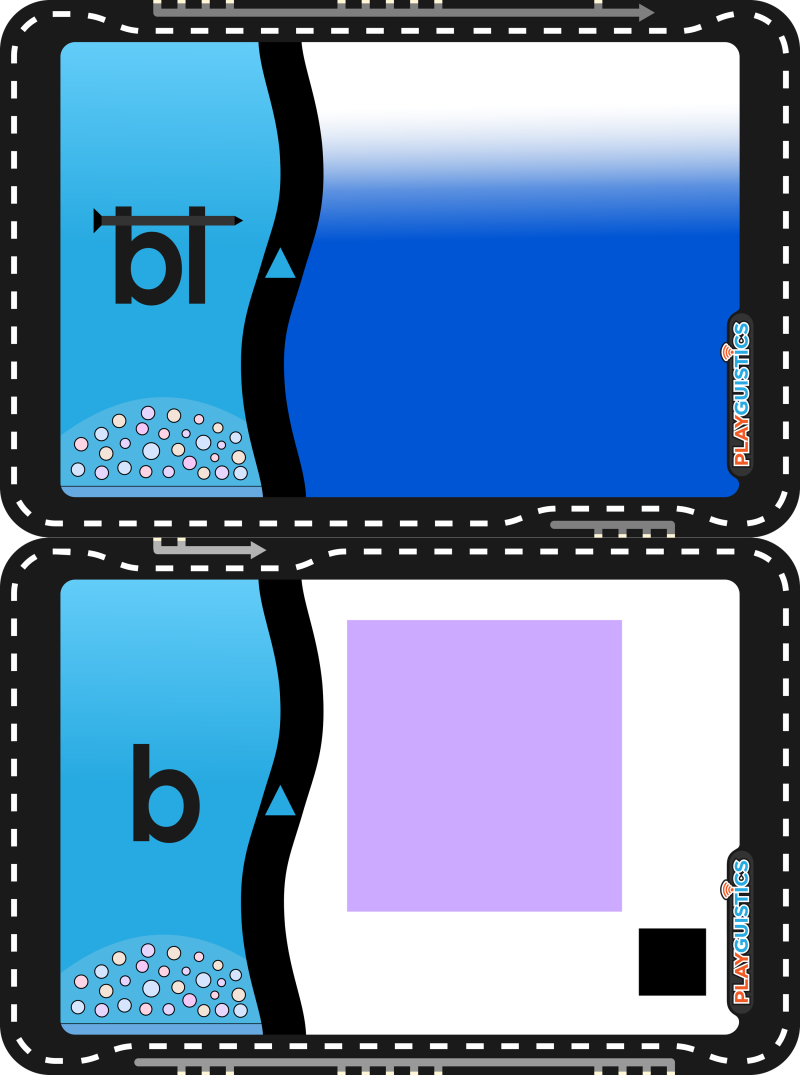
As you can see with the flashcards above, when placed in the order "blue big," gray connecting lines don't connect. Now let's switch the order around to "big blue."
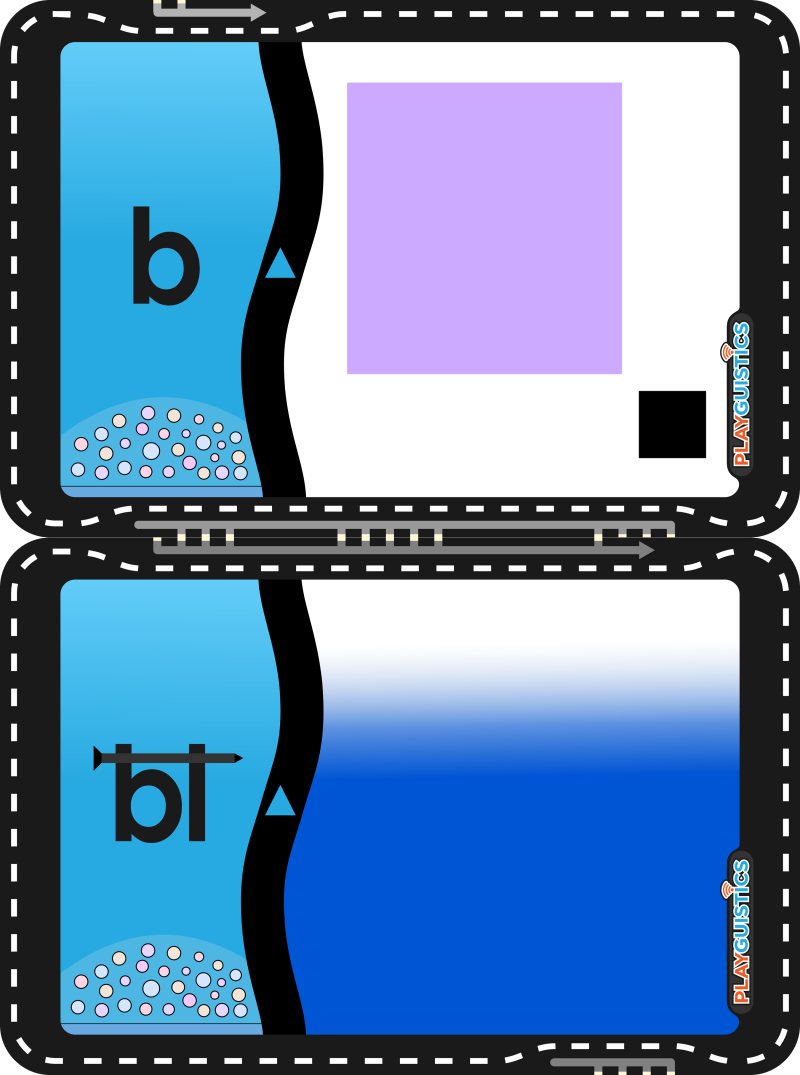
As you will now see, the gray connecting lines DO connect. You'll be able to do this with all of our adjective cards (except for special adjectives like 'done' that don't appear in adjective sequences), which you may find coming in handy again and again.
Explaining Different Types of Nouns
Different nouns have different grammar rules. For example, we never put the word 'the' in front of names.
We would also say "the pairs of scissors" instead of "two scissors."
The part-of-speech icons on each card will make it easier for teachers to communicate to their students what is special about each type of noun.
|
Singular Noun Symbol A teacher can point to the three examples -- a bottle, a cup, and a pot -- and emphasize that there is only one of each. |
Plural Noun Symbol For easy comparison with singular nouns, this symbol can be used to emphasize that there are 2 bottles and 3 cups, instead of just 1 of each. |
Uncountable Noun Symbol Teachers can ask students "how many waters can you count?" to drive home the point that some nouns cannot be counted in individual units. |
|
Name Noun Symbol This symbol is for words that never follow 'a,' 'the,' or 'some,' because they are a name This includes 'Mars,' but also 'noon.' |
Unique Noun Symbol This symbol is for words that can follow 'the,' but usually don't follow 'a' or 'some.' For example, 'the equator,' 'the future,' or 'the universe.' |
Plural Noun Symbol This symbol makes it easy to explain that some words, like 'pants,' 'pliers,' and 'scissors,' are always plural, because they combine two parts. |
